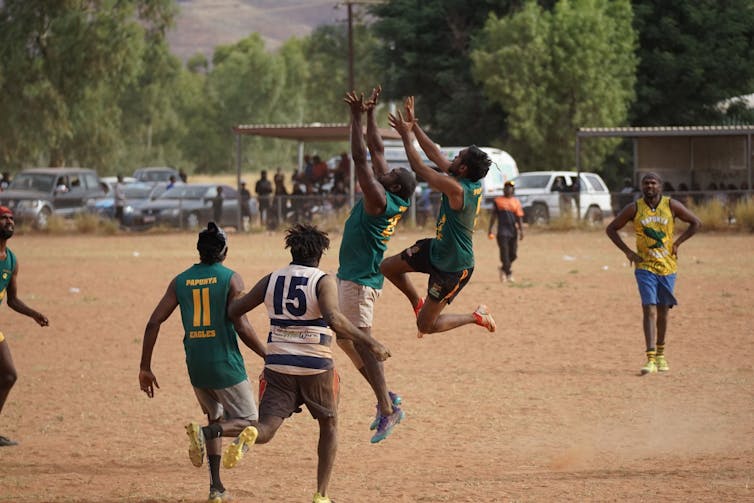'On Country' football league an opportunity to bring communities together – but we need more government funding
- Written by Anna Dunn, PhD candidate, Anangu Futures ARC Linkage , The University of Melbourne

This article contains quotes from First Nations community members, which the author has obtained permission to share and publish. Images have also been used with their permission
This article was co-written with Papunya community leader and Luritja-Pintupi man Terence Abbott Tjapanangka.
In Papunya, a remote Luritja and Pintupi community, the red earth football field is the centre of social activity every weeknight from March to September. Against the backdrop of Ulumbaru, the Northern Territory’s second-highest mountain, men and young people train into the night.
Alice Springs Town Council’s decision in March[1] to withdraw its support for Central Australia’s remote football competition leaves the rhythms of life for community football players in the lurch this year, as coaches scramble to put together a league of their own.
The controversial “pause” on remote communities’ access to Alice Springs ovals was implemented as a response[2] to the Alice Springs “crime crisis”. The move has raised the possibility of devising “On Country” leagues to be played in communities.
Recent federal government attention[3] to the “crime crisis” in Alice Springs presents an opportunity to support surrounding communities in tangible, self-determined ways.

















